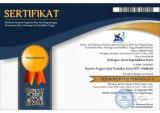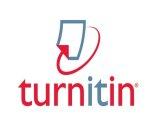Molecular Docking of Anthraquinones from Morinda citrifolia Root as α-Glucosidase Inhibitors
DOI:
https://doi.org/10.33394/hjkk.v13i5.17725Abstract
Diabetes mellitus is a chronic metabolic disorder characterized by persistent hyperglycemia and remains one of the major contributors to global morbidity and mortality. The development of safer and more effective antidiabetic agents from natural products has gained increasing attention due to the limitations of current synthetic drugs. Morinda citrifolia root has been reported to contain various anthraquinone derivatives with potential bioactivity. This study aimed to evaluate the inhibitory potential of 23 anthraquinone derivatives from Morinda citrifolia root against the α-glucosidase enzyme using an in silico molecular docking approach. Molecular docking was conducted using AutoDock Vina against α-glucosidase (PDB ID: 5ZCC) after protein preparation in UCSF Chimera. The docking targeted the catalytic site containing key residues (Arg411, Gln256, and Asp327) that interact with acarbose, and interaction patterns were analyzed using BIOVIA Discovery Studio Visualizer. The results demonstrated that several compounds exhibited stronger binding affinities than the standard inhibitor acarbose (-8.4 kcal/mol), while maintaining similar interaction patterns. In particular, compound 21 (-8.9 kcal/mol, H-bond with Gln256), compound 18 (-8.7 kcal/mol, H-bond with Arg411 and Gln256), and compound 15 (-8.3 kcal/mol, H-bond with Gln256 and Asp327) emerged as the most promising candidates. These findings suggest that anthraquinone derivatives from Morinda citrifolia root may serve as potential α-glucosidase inhibitors and warrant further pharmacokinetic and experimental validation.
Published
How to Cite
Issue
Section
Citation Check
License
License and Publishing Agreement
In submitting the manuscript to the journal, the authors certify that:
- They are authorized by their co-authors to enter into these arrangements.
- The work described has not been formally published before, except in the form of an abstract or as part of a published lecture, review, thesis, or overlay journal.
- That it is not under consideration for publication elsewhere,
- That its publication has been approved by all the author(s) and by the responsible authorities – tacitly or explicitly – of the institutes where the work has been carried out.
- They secure the right to reproduce any material that has already been published or copyrighted elsewhere.
- They agree to the following license and publishing agreement.
Copyright
Authors who publish with Hydrogen: Jurnal Kependidikan Kimia agree to the following terms:
- Authors retain copyright and grant the journal right of first publication with the work simultaneously licensed under a Creative Commons Attribution License (CC BY-SA 4.0) that allows others to share the work with an acknowledgment of the work's authorship and initial publication in this journal.Â
- Authors are able to enter into separate, additional contractual arrangements for the non-exclusive distribution of the journal's published version of the work (e.g., post it to an institutional repository or publish it in a book), with an acknowledgment of its initial publication in this journal.
- Authors are permitted and encouraged to post their work online (e.g., in institutional repositories or on their website) prior to and during the submission process, as it can lead to productive exchanges, as well as earlier and greater citation of published work.
Licensing for Data Publication
Hydrogen: Jurnal Kependidikan Kimia uses a variety of waivers and licenses, that are specifically designed for and appropriate for the treatment of data: Open Data Commons Attribution License, http://www.opendatacommons.org/licenses/by/1.0/ (default) Other data publishing licenses may be allowed as exceptions (subject to approval by the editor on a case-by-case basis) and should be justified with a written statement from the author, which will be published with the article.








